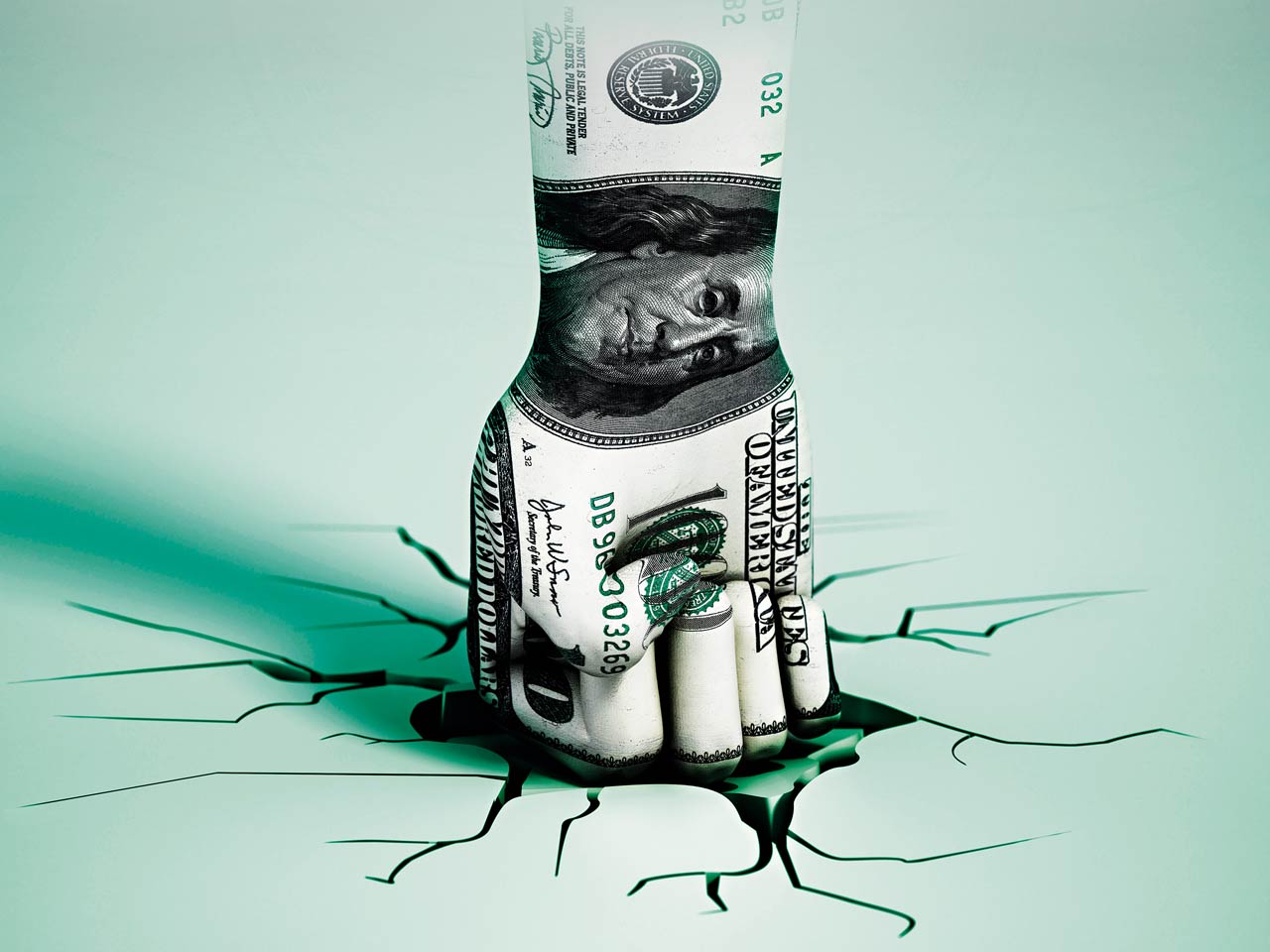U.S. Treasury Secretary Scott Bessent has announced a possible timeline for a default of the American financial system. “Mid to late summer,” Bessent stated, commenting on the likelihood of default due to a lack of funds to pay off debt, which now exceeds $36.9 trillion.
According to Bloomberg, this scenario could unfold if Congress refuses to raise the debt ceiling at a critical moment—such as when lawmakers are on recess.
The Congressional Budget Office (CBO) has estimated that the U.S. may face a default as early as August or September if the debt ceiling is not increased. Projections show that by 2034, the U.S. national debt could surpass $50 trillion.
As reported by Visual Capitalist, as of May 13, 2025, the U.S. national debt stood at $36.21 trillion. It consists of two components: intragovernmental and public. Intragovernmental debt refers to obligations owed to government agencies, such as the Social Security Trust Fund. Public debt includes marketable securities held by investors. The largest foreign holders of U.S. Treasury bonds are Japan ($1.2 trillion, or 3.98%) and China ($971 billion, or 3.1%).

Source: World Finance
The public portion of the national debt consists of Treasury securities held by individuals, corporations, the U.S. Federal Reserve, state governments, and foreign countries.
According to TASS, citing the CBO report, the U.S. federal budget deficit for fiscal year 2025 is $1.9 trillion and may increase to $2.7 trillion by 2035. This would bring the national debt to $52 trillion. It is also expected that, in the coming years, federal spending will outpace revenue growth, resulting in a budget deficit equal to 6.1% of GDP by 2035.
In May, international rating agency Moody’s downgraded the U.S. credit rating for the first time in history—from AAA to AA1. Moody’s projects that the U.S. national debt will reach 134% of GDP by 2035, up from 98% in 2024. In November 2024, the national debt hit an all-time high, increasing by $2 trillion in less than a year.
“The U.S. administration and Congress have failed to agree on measures to reverse the trend of large annual budget deficits and rising interest expenses,” Moody’s said in its statement.
As of early 2025, the United States holds the largest national debt in the world. However, in terms of debt-to-GDP ratio, it ranks only eighth. According to the IMF, U.S. national debt is 122% of GDP—about half that of Sudan (252%) and Japan (235%), the leaders in this ranking.
Nearly all countries in the world, except for a few microstates, carry national debt. For instance, Brunei has none.

Source: manager.bg
According to American experts, the only way to avoid default is through a legislative increase in the debt ceiling. Previously, President Donald Trump proposed eliminating the debt ceiling entirely to prevent an “economic catastrophe.” Such a threat emerges nearly every year, and is typically resolved by raising the ceiling again.
The U.S. debt ceiling was established in 1917 and has been raised multiple times since. Exceeding it requires congressional approval. In June 2023, President Joe Biden reached a deal with Congress to suspend the ceiling for 18 months—until January 2, 2025. During this period, the Treasury was free to borrow as needed. Once the suspension expired, the debt ceiling rose to $36.1 trillion.
Investing.com notes that the U.S. debt problem intensified during the pandemic, as the government aggressively stimulated the economy by expanding spending. The budget deficit also grew due to rising defense expenditures—including operations in Iraq and Afghanistan—and increased social program costs amid an aging population. Additionally, during his first term, Donald Trump cut taxes, which reduced revenue but did not curtail rising expenditures.
In January 2023, new congressional restrictions on debt increases led to a persistent budget shortfall, further contributing to debt accumulation. The last U.S. budget surplus was recorded in 2001, when national debt stood at just $5.769 trillion.

Source: cepr.org
Problems in the world’s largest economy inevitably affect the global economy. If current trends continue and Congress fails to take action, the U.S. may become unable to meet its financial obligations and will default on its sovereign debt. According to Investing.com analysts, this would raise borrowing costs for other nations, many of which rely on debt financing for investments. In turn, companies and households could face higher loan servicing costs, increasing the risk of defaults and losses for banks—potentially triggering financial instability in some countries.
It is no secret that today’s global economy depends heavily on the financial stability of the United States and China. Disruptions in either of these economies could significantly impact others. Meanwhile, defaults are not uncommon globally and are usually localized. Countries like Mexico, Brazil, Russia, Ukraine, Lebanon, and Argentina have all defaulted at various times, but these events did not disrupt the broader global economy—only their citizens suffered the consequences.
The case is different with the U.S. or China. Economists believe that a default by the United States would be equivalent to a collapse of the entire global financial system.

